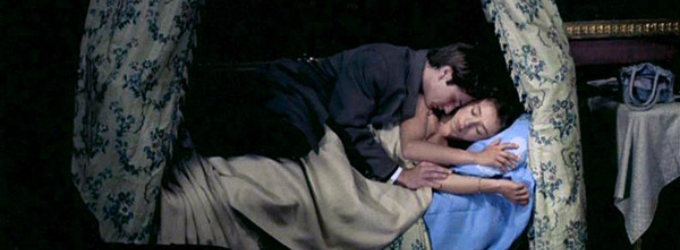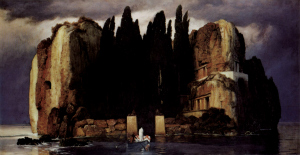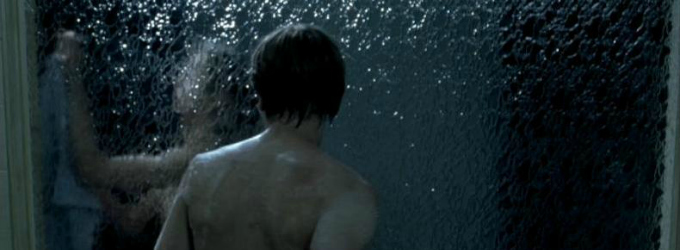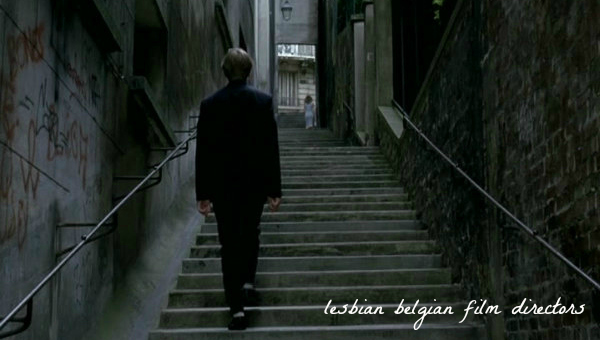 This film may be very difficult for you to watch. Difficult if you do not recognise yourself in any of the characters, and find them ridiculous, baffling or frustrating. Difficult if you do feel an affinity for either or both of the manipulative lovers, and feel tempted into a masochistic reliving of your past foibles. Difficult if you love Proust and keenly anticipate a film which brings his characters to life – you may find the piece no more than a jejune and alienating alternative to Chabrol’s L’ENFER with sticky traces of Soderbergh’s SEX, LIES AND VIDEOTAPE. Difficult if you are not familiar with Proust’s work, and so do not understand what inspired this piece.
This film may be very difficult for you to watch. Difficult if you do not recognise yourself in any of the characters, and find them ridiculous, baffling or frustrating. Difficult if you do feel an affinity for either or both of the manipulative lovers, and feel tempted into a masochistic reliving of your past foibles. Difficult if you love Proust and keenly anticipate a film which brings his characters to life – you may find the piece no more than a jejune and alienating alternative to Chabrol’s L’ENFER with sticky traces of Soderbergh’s SEX, LIES AND VIDEOTAPE. Difficult if you are not familiar with Proust’s work, and so do not understand what inspired this piece.
This film is about difficulty in love. If a word is repeated often enough, it loses all meaning: for example, difficult. Simon of La Captive, a difficult young man, has scrutinised the object of his affection (not to mention his own navel and the ceiling of his bedroom) to such an extent as to render his love void of all rational meaning: it has become a cancerous vortex of emotion.
Akerman forces a perceptual orbit of Simon which suggests that he may be conducting the entire film mentally…
LA CAPTIVE was inspired by Proust’s La Prisonnière, whose chief characters, Marcel and Albertine, were renamed Simon and Ariane so that anyone familiar with the original work would not approach the film with any preconception or prejudice. In paring back Proust’s rich Le Temps Retrouvé and focussing almost exclusively on the dynamic between the lovers, Akerman forces a perceptual orbit of Simon which suggests that he may be conducting the entire film mentally, and probably abed to boot. Any time is bedtime for lovers of all ages, whether together or frowsting like Proust, brooding on things said or unsaid. Perhaps each scene depicts a series of rehearsals never to be enacted, patched together with past conversations relived and revised so often as to render them equally fictional. This is, after all, a film based on a piece written in such a way as to smudge the boundary between author and protagonist. Proust wrote in Within a Budding Grove of how he/Marcel endlessly conducted with Albertine an “interminable inner dialogue in which I made her question and answer, think and act”. Is Simon a playwright, writing for an audience of one?

Set in a timeless Paris, LA CAPTIVE has a moonstruck, echoing quality that evokes the paintings of Paul Delvaux, whose milky Surrealist maidens inhabited a “climate of silent streets with shadows of people who can’t be seen”. The three acts of the film are borne on Sergei Rachmaninoff’s Isle of the Dead, which was inspired by the famous Arnold Böcklin painting [left]. This artwork particularly bewitched that icon of national obsession, Adolf Hitler. Thus the spirit of the Isle drives Simon on waves of morbid obsession, the symphonic poem charting an imagined journey to and from the Isle – from the very first scene, the music prophesies his dark fate.
The scene often identified as the defining moment is often used in publicity material, and its centrepiece is that great visual cliché of cinema and TV drama, the naked lady showering behind a frosted glass door. Cheap, but apt, as the original text dwells extensively on clichéd imagery in candid portrait photography, and on the clichéd gestures and interactions which ensnare the mind of the human being in love. Marcel dissects Albertine as though he is dismantling a zoetrope or examining a strip of film stock. Each snapshot of his lover is a different person to whom he reacts with different theatrical masks of his own. Marcel spends so much time in memory loops that he feels his hair is prematurely greying.
This clichéd image of Ariane in the shower is iconic to the film, and yet so much more moving and evocative in its original prose form. Proust describes on the page a spellbinding, sunlit forest complete with songthrush. On the screen, there is no yellow, no green, and no place for cinematographer Sabine Lancelin’s elegant way with magenta and cyan. Most striking is the unconventional layout of the bathroom, which makes a picture-box of the shower cubicle for the enjoyment of the adjacent bather. This moment passes far more prosaically than it does in the book, but it is this earthly quality that gives the scene such charm. Simon has a discreet tug in the tub, rhapsodising on his lover’s lady garden like a leech on a sex line, and fancying himself quite the Rimbaud. Ariane counters by cheerily voicing that common concern of the modern woman: an unfounded, media driven fear of “feminine odour”. The camera can’t conjure Proust’s golden woodland here, but the words appeal to the olfactory. One smells slippery hothouse flowers and untrimmed bushes. One smells “intimate wipes” and bubble bath.
Ariane personifies, to Simon, the innocence of a baby and the purity and immediacy of a songthrush.
In the shower, Ariane sings a popular Pierre Dastaille song from the 1950s, Tout ça parce qu’au bois de Chaville. It is a song of innocence lost and found. Enchanted by the sound of a thrush, two people make love in a wood, and a baby is born. There follows much cynical speculation as to the future of the baby, who is bound to become corrupted by society. Ariane personifies, to Simon, the innocence of a baby and the purity and immediacy of a songthrush. Sylvie Testud’s “Ariane” has a transiently engaging quality, somehow mingling Dustin Hoffman and Alyson Hannigan both visually and artistically. Her character is fully formed and yet intangible, as is the lumpen agoraphobic Simon (Stanislas Merhar) – both have the looming, invisible presence of puppeteers; and yet in their intercourse they are as wooden as puppets.
Simon regularly removes his amour from her microscope slide/pedestal and harries Ariane as though she were a child, and a slow child at that. She inevitably complies, and with amusement, somehow retaining her autonomy. For his part, Simon’s true thrush is Thomas Hardy’s Darkling Thrush, sending blessed hope through the spectre-gray frost. Sexton Furnival in Neil Gaiman’s Death: The High Cost Of Living, decried love and said that “[the best people ever get is] horny and scared, so when they find someone who makes them horny, and they get too scared of the world outside, they stay together and they call it love.” Like Furnival, Akerman claims that she does not believe in love and romance – only in desire and affection. She clipped the colour and comic relief from Proust’s original text just as her protagonist would clip the wings of his angel. She paints an inner space where the self-destructive lover, in his Proustian rush, becomes nothing more than an impotent, frightened animal. Feminist interpretation aside, the passion which drew Akerman to the original text transcends gender and sexual affiliation. Simon is a creature that is too scared to behold its love and yet to horny to resist dry-humping it while it dreams; and its dreams are no more available to him than their waking host.
La Captive may at first instil the viewer with a feeling of having been invited to dinner at the home of a tedious couple who can only become sexually aroused by bickering in front of a guest. If this is the case, the viewer might well expect to be shooed out before dessert. However, it is not the tinkling of dropped cutlery that closes the story, but the terrifying sound of Charon’s oars wrought by Rachmaninov, bringing the inevitable burnout on the surf whence his love first grew; bringing Simon’s devastating Dies Irae.
httpvh://youtu.be/SmpPfAtn36s

